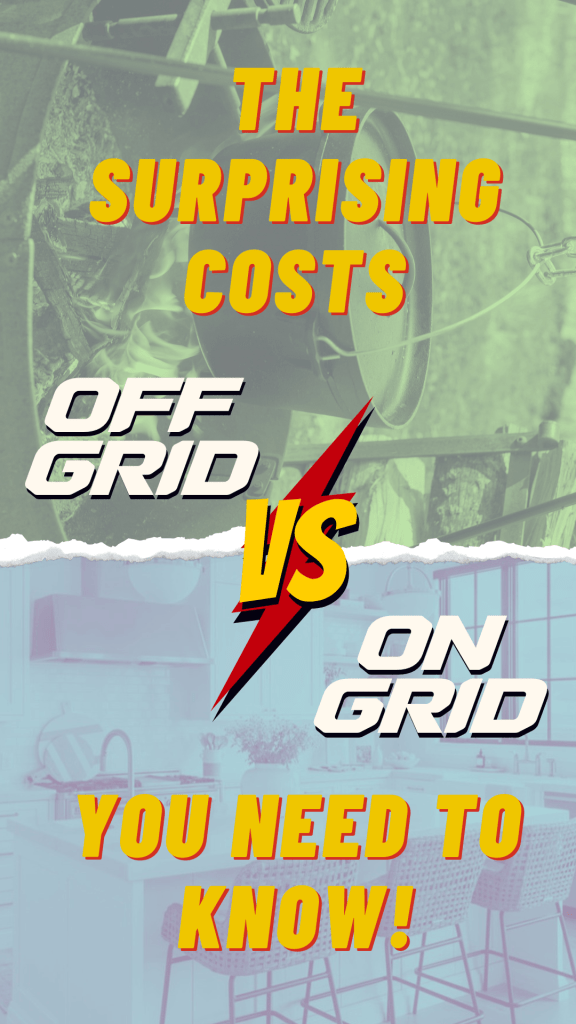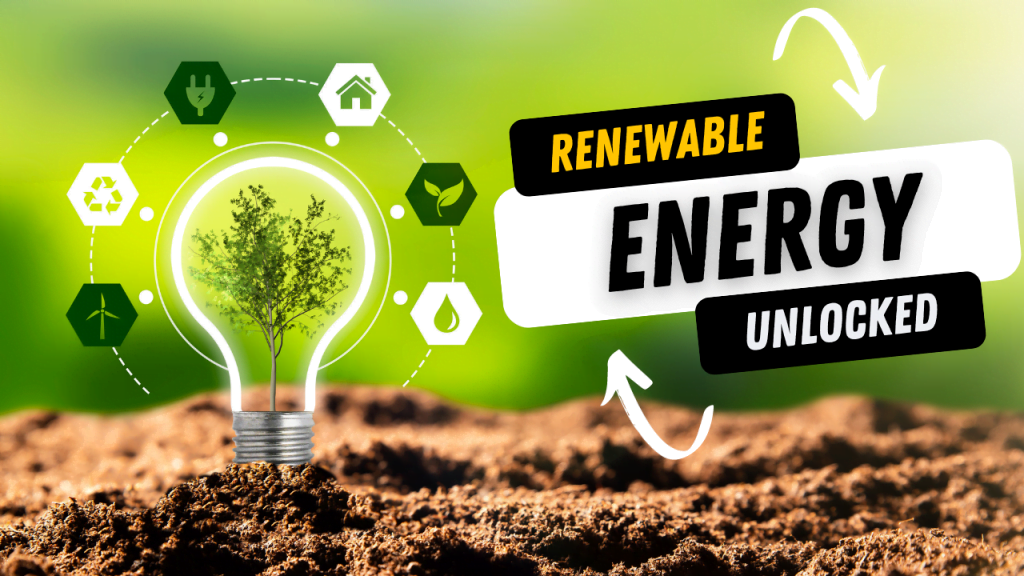Are you curious about how much does it cost to live off-grid for a family of four? With the increasing interest in sustainable living, many people are considering alternative lifestyles, including living off the grid. This blog post will give you a thorough understanding of the costs involved, focusing on various aspects of off-grid living. Our aim is to provide you with an informative, engaging, and practical guide to help you make informed decisions.
Initial Investment
Land Acquisition
When transitioning to off-grid living, the first step is finding a suitable piece of land. The location is crucial, as it determines the availability of resources like water and solar energy. Factors such as climate, local regulations, and proximity to amenities also play a vital role. Land prices vary significantly based on these factors, ranging from $1,000 to $10,000 per acre or even higher in some areas. A family of four may require a plot of 2-5 acres, resulting in a cost of $2,000 to $50,000, depending on the location.

Off-grid Energy Systems
One of the primary aspects of off-grid living is generating your own electricity. Solar power is the most popular choice for off-grid living due to its accessibility and decreasing costs. A family of four would typically need a solar power system capable of producing 5-10 kW, with installation costs ranging from $15,000 to $50,000 or more, depending on location and battery storage capacity. Wind and hydro power can also be considered, but the feasibility and costs will vary based on location and specific requirements.
Take control of your energy independence and harness the power of a cost-effective hybrid electricity system. We highly recommend reading “How to Set Up Your Backyard Hybrid Electricity System at a Low Cost and Produce Your Own Electricity.” This indispensable guide provides step-by-step instructions on selecting the ideal batteries, controllers, cables, and inverters, enabling you to optimize efficiency and enjoy a dependable source of power.
Water and Sanitation
Access to clean water is a fundamental requirement for off-grid living. Drilling a well is a common option, with costs between $3,000 and $15,000. Rainwater catchment systems are typically more affordable, ranging from $500 to $5,000. For a family of four, a combination of both sources may be ideal, with an estimated cost of $3,500 to $20,000.
Water treatment systems are necessary to ensure safe drinking water. A family of four might need a purification system costing between $1,000 and $5,000. Waste disposal is another crucial aspect of off-grid living, with composting toilets and septic systems as common choices. Installation and maintenance costs for a family of four can range from $3,000 to $15,000, depending on the specific system and requirements.
Housing and Infrastructure
Building a sustainable home suitable for off-grid living may cost between $100 and $300 per square foot, depending on the materials and design. For a modest 1,500 square foot home, a family of four could expect to spend between $150,000 and $450,000 on construction costs.
Additional infrastructure, such as greenhouses, gardens, workshops, storage, and access roads, may require an investment of $10,000 to $50,000, depending on the specific needs and requirements of the family.
Estimated Total Initial Investment
To answer your initial question of “How much does it cost to live-grid?”. You need to take into account land acquisition, off-grid energy systems, water and sanitation, and housing and infrastructure costs, a family of four could expect an initial investment ranging from approximately $170,500 to $585,000 or more for setting up their off-grid lifestyle. This estimate, however, may vary significantly based on individual preferences, location, and specific requirements.
Ongoing Expenses
Off-grid living comes with ongoing expenses such as maintenance and repairs for energy systems, water and sanitation systems, and home infrastructure. For a family of four, these costs might range between $1,000 and $5,000 per year, depending on the complexity and quality of their systems.
Property taxes and insurance will also contribute to the ongoing costs, with annual expenses varying based on location, property size, and home value. A family of four might expect to pay between $1,000 and $10,000 per year for these expenses.
Food and supplies are another significant expense for off-grid living. You might now want to think about these costs when asking “how much does it cost to live off-grid. But you have to I’m afraid. Growing your own food, raising livestock, hunting, and foraging can help reduce costs, but initial investments in gardening, livestock, and equipment will be necessary. For a family of four, food and supplies might cost between $5,000 and $15,000 per year, depending on the level of self-sufficiency and local market prices.
Rewarding & Sustainable But Needs Investment
Off-grid living for a family of four can be a rewarding and sustainable choice, but it requires a considerable initial investment and ongoing expenses. While the costs can vary greatly based on individual circumstances, this guide provides a rough estimate of what you might expect to spend. It’s important to carefully consider your family’s needs, preferences, and financial situation when deciding whether off-grid living is the right choice for you. With careful planning and research, living off the grid can offer numerous benefits, including lower utility bills, a more sustainable lifestyle, and increased self-reliance and independence.
Comparative Costs: Off-grid Living vs. Owning or Renting a Home
Initial Investment Comparison
As outlined earlier, the initial investment for off-grid living for a family of four can range from approximately $170,500 to $585,000 or more, depending on various factors. In comparison, the initial costs of owning a home in a more traditional setting typically include a down payment, which could be 10-20% of the home’s value, and closing costs, which can range from 2-5% of the loan amount.
For a $300,000 home, the initial investment could be between $60,000 and $90,000. Renting a home requires a security deposit and possibly the first and last month’s rent upfront. For a $2,000 per month rental, the initial costs might be between $4,000 and $6,000. However, these figures can vary greatly based on the housing market and regional cost of living.
Monthly Expenses
Ongoing expenses for off-grid living can range between $7,000 and $30,000 per year or approximately $583 to $2,500 per month for a family of four. These costs include maintenance and repairs, property taxes and insurance, and food and supplies.
In contrast, monthly expenses for homeowners include mortgage payments, property taxes, insurance, utilities, and maintenance, which can vary significantly based on the home’s value, location, and size. For renters, monthly expenses typically include rent, utilities, and renter’s insurance.
Long-term Financial Outlook
Off-grid living often provides long-term financial benefits, such as reduced or eliminated utility bills, potential savings on food expenses, and lower overall cost of living. Additionally, off-grid properties may appreciate in value over time, and homeowners can build equity in their homes, similar to traditional homeownership.
On the other hand, traditional homeownership allows for building equity, possible appreciation of property value, and potential tax benefits. Renters don’t build equity, but they may have greater flexibility in terms of relocation and have fewer maintenance responsibilities.
Additional Benefits and Drawbacks
Off-grid living offers several non-financial benefits, such as a more sustainable lifestyle, increased self-reliance, and independence. However, there can be challenges, including limited access to amenities, potential isolation, and the need for hands-on maintenance and problem-solving.
Traditional homeownership provides stability and community, access to amenities, and the potential for building long-term wealth. However, homeowners may face financial risks, such as fluctuating property values and unforeseen maintenance expenses. Renters enjoy greater flexibility and fewer maintenance responsibilities but have less control over their living situation and do not build equity.
Cost Conclusion
When comparing off-grid living to traditional homeownership or renting, it’s essential to consider the financial aspects, as well as lifestyle preferences, personal values, and long-term goals. Each option offers unique benefits and drawbacks, and the right choice will depend on individual circumstances and priorities.
Carbon Output for Off-grid and Home Owning Families
The carbon output of a family of four living off-grid varies significantly based on factors such as the type of renewable energy system, level of self-sufficiency, and lifestyle choices. However, on average, an off-grid family of four may produce a carbon footprint of approximately 4 to 6 metric tons of CO2 equivalent (CO2e) per year. This estimate takes into account the emissions related to energy production, transportation, waste management, and food production. Calculate your carbon footprint
In comparison, a home owning family of four, living in a traditional grid-tied home, might produce a carbon footprint of approximately 16 to 20 metric tons of CO2e per year. This estimate includes emissions from grid-supplied electricity, natural gas consumption, transportation, waste management, and food production. It is important to note that these numbers can vary depending on factors such as location, energy sources, and individual consumption habits.
Carbon Conclusion
Off-grid living generally results in a lower environmental impact and carbon footprint compared to traditional homeownership. The carbon output for an off-grid family of four is typically lower due to their reliance on renewable energy sources, more sustainable water and waste management practices, responsible land use, and environmentally-friendly food production methods. However, the specific carbon output of each option will depend on individual choices, practices, and the availability of sustainable resources in a given area.
For those concerned about their carbon footprint, off-grid living offers a more sustainable lifestyle. However, it’s important to note that even within traditional homeownership, individuals can take steps to reduce their carbon output, such as implementing energy-efficient appliances, adopting water-saving measures, and supporting local and sustainable food producers.
How Much Does It Cost to Live Off Grid FAQ / TL;DR
1. Can I reduce the initial investment for off-grid living?
Yes, you can reduce the initial investment by opting for a smaller or more modest off-grid property, using DIY solutions, or purchasing used equipment. However, these choices may affect the efficiency, comfort, and long-term durability of your off-grid systems.
2. Are there any financial incentives or grants for off-grid living?
Some countries or regions offer financial incentives or grants for adopting renewable energy systems, energy-efficient appliances, or sustainable building practices. Research your local government’s programs and initiatives to see if you are eligible for any assistance.
3. How can I ensure my off-grid home is energy-efficient?
Choose energy-efficient appliances, proper insulation, and passive solar design principles when building or retrofitting your off-grid home. Additionally, monitor and manage your energy consumption to ensure optimal efficiency.
4. What are the maintenance requirements for an off-grid system?
Maintenance requirements vary based on the type of system, but generally include cleaning solar panels, checking batteries, and servicing wind or hydro turbines. Regular inspections and preventative maintenance can help ensure optimal performance and extend the life of your off-grid systems.
5. How can I reduce my off-grid living expenses?
Reduce off-grid living expenses by growing your own food, raising livestock, conserving water and energy, and repurposing or recycling materials. Additionally, proper system maintenance can help prevent costly repairs or replacements.
6. Can I live off-grid in an urban or suburban setting?
While off-grid living is more commonly associated with rural settings, it is possible to live off-grid in urban or suburban environments. However, space constraints, zoning regulations, and access to renewable resources may limit the feasibility and sustainability of off-grid living in more densely populated areas.
7. How can I stay connected to the internet and telecommunications while living off-grid?
Off-grid living does not necessarily mean being disconnected from the internet or telecommunications. Options such as satellite internet, cellular networks, or wireless broadband can provide reliable connectivity even in remote off-grid locations.




